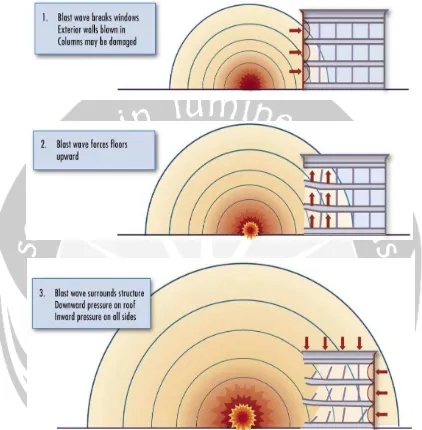5 CHAPTER II
LITERATURE REVIEW
2.1. Blast Phenomena
6
2.2. Blast Effect
An explosion is an extremely rapid release of energy in the form of light, heat, sound, and a shock wave. A shock wave consists of highly compressed air traveling radially outward from the source at supersonic velocities. As the shock wave expands, pressures decrease rapidly (with the cube of the distance) and, when it meets a surface that is in line-of-sight of the explosion, it is reflected and amplified by a factor of up to thirteen. Pressures also decay rapidly over time (i.e., exponentially) and have a very brief span of existence, measured typically in thousandths of a second, or milliseconds (FEMA 428, 2003).
7
2.3. Building Damage
The extent and severity of damage and injuries in an explosive event cannot be predicted with perfect certainty. Past events show that the unique specifics of the failure sequence for a building significantly affect the level of damage. Despite these uncertainties, it is possible to give some general indications of the overall level of damage and injuries to be expected in an explosive event, based on the size of the explosion, distance from the event, and assumptions about the construction of the building.
8
